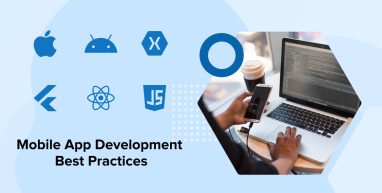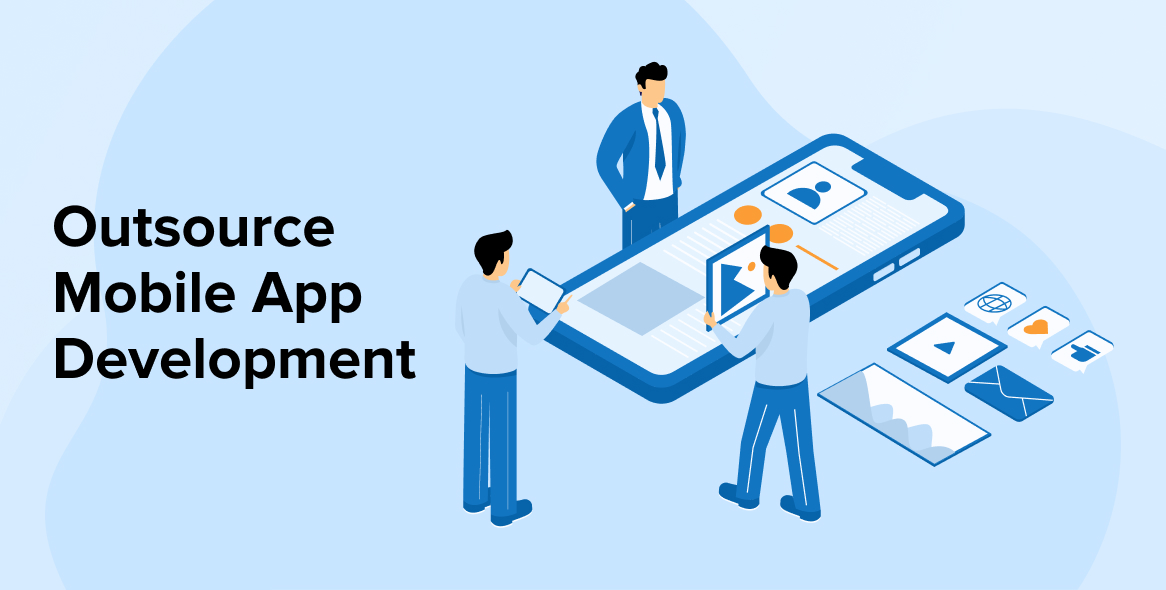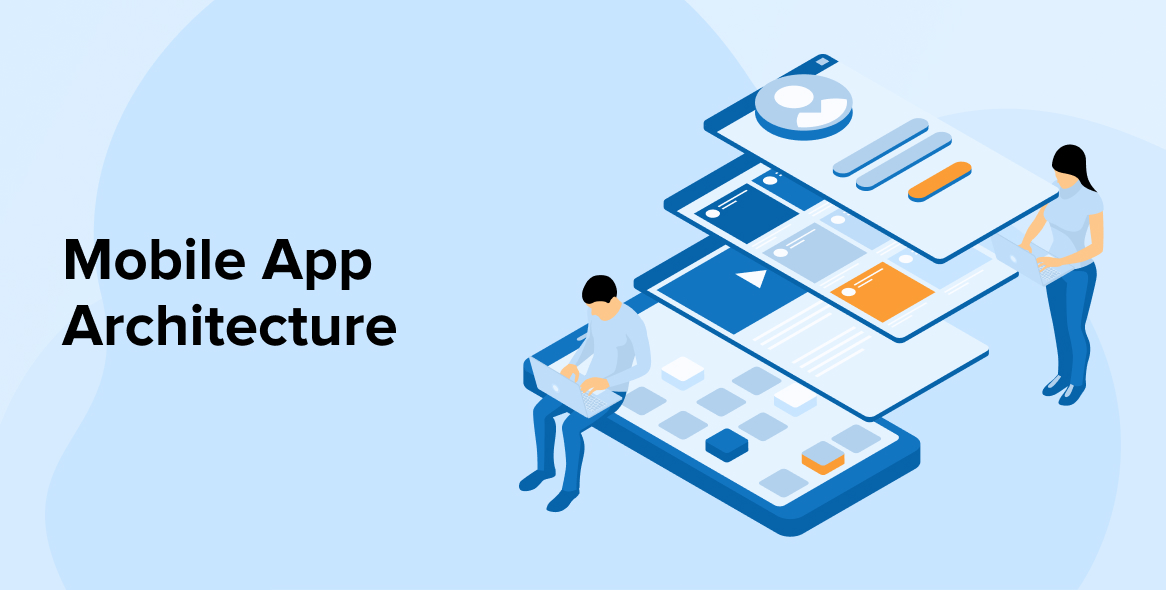
Mobile app development is one of the most important and highly-used processes as the usage of mobile applications is increasing every day and new businesses are coming online by launching their own apps. In this process, multiple separate tasks are performed to create a single product. For this, the developers follow mobile app development best practices that can help businesses get their ideas into reality by offering them high-performing apps with great designs.
Every mobile app development company follows these best practices to satisfy clients with excellent user-friendly products. But as there are various tactics available in the market, which one to use is a difficult process. Therefore, in this blog, we are going to discuss some of the top practices that the developers can have a look at and then decide which one fits right for their projects.
1. Top Mobile App Development Best Practices
Mobile app development is a long process that is made up of several short processes and involves a great deal of decision-making. There are certain things that may not seem wrong but can be very harmful to the mobile application.
Let’s check out some of the mobile app development best practices:
1.1 Start from Research
One of the best practices for every mobile app development company is research. The reason behind it is that if the application is created without proper research, it might not stand a chance in the competitive world. When it comes to mobile app development projects, there are a lot of components that need to be analyzed. The first thing to do is identify the target audience of the client’s application. Once the audience is identified, you can know how they will behave and this makes it easier to create an application. After identifying the prospective users, the next thing to figure out is their needs and how the application makes their lives easier or what can be of more value to the users.
Basically, proper research about the prospective users, their requirements, and features that will be useful to them can save a lot of time and money that goes behind creating apps without actually knowing the users.
1.2 Build Your Strategic Plan
The next best practice for creating apps for mobile devices is creating a strategic plan. At this stage, it is time for the developers to create a detailed roadmap of the next steps that are to be followed for the mobile app development process. Here, the mobile app development team breaks down the entire plan into small and manageable portions which can be followed throughout the development phase. This helps in determining the value of the mobile application to the end-users. Besides, having a strategic plan for a mobile app development project can help developers itemize the functions and features of the app that can offer both flexibility and mobility.
1.3 Choose Technology Stack
After having a proper mobile application development plan in hand, the next step is to choose the right tech stack that aligns with current app development trends. For this, the first thing mobile app developers need to do is talk to the clients and decide which type of app they want, native, hybrid or cross-platform. All these mobile development methods come with their own pros and cons. Which type to choose depends on the type of application the client requires.
1.4 Go for the Right Platform
If you decide to go with the native route, you will have to choose between Android and iOS development. This is completely based on the market research done previously and after finding out what devices the prospective users have. If your choice of platform is based on the targeted audience, then it will be beneficial for the business. The main reason behind it is that there are major differences between these two platforms and the requirements of their users. Therefore, figuring out which of these platforms the target audience uses can be helpful when any business is launching a new application or web store.
In this case, if any business organization decides to create both native applications by itself, it might be too much. So, though the company wants to have an application on both Apple and Android stores, developing an application for anyone first after market research is advisable.
1.5 Focus on Security
The next best mobile app development practice is security. Security is the biggest concern for any mobile app users as they will be sharing basic personal details or banking details with the application as per the app’s type and requirement. This is why from the early stages of mobile app development, developers take app security seriously and make business organizations understand its importance.
The app needs to be secured as for any business organization from any domain, applications will have tons of data and sensitive information. This is because the application will have to host info about the company and the users both. In addition to this, based on what the application is used for, plays an important role in deciding the security level of the app. For instance, if it is a payment app or eCommerce app which needs to collect payment information such as debit or credit card details of the user, then the security level required must be very high. If the app only collects basic user information like phone numbers, home addresses, and more, the security measures taken are less but they are still important.
The main reason behind the app and user security is that it is very important to protect the user’s data and offer them secure features to gain their trust only then users will stay around. Besides, if your business application is unable to reach standard security measures, then it can damage the brand name.
So, businesses must hire mobile app development companies that take precautions and use encryption tactics like 2FA (two-factor authentication) to protect user information.
1.6 Testing
Testing is another important mobile app development practice that needs to be followed by the developers. When it comes to testing, the development team must never wait till the entire application is created to test its performance. Instead, testing must be started from the initial stage of the mobile development process. The reason behind it is that if the app is not tested periodically, it might become very complex to identify bugs and fix them at the end. Therefore, regular testing is the best option. Besides, it can also help in minimizing app development costs.
In addition to this, software engineers can also test the application by using one of the best testing ways, beta testing. For this, they can also work on online mobile app development platforms like Beta Family to find application testers.
Further Reading on: Importance of Mobile App Testing
1.7 Design Planning
App designing is an essential concept as it finalizes the look of the application. Therefore, app designing requires proper planning. Here, the designers work together with the developers and offer their creative approach that can meet the technical needs of the application to create a unique solution. In order to carry out this task, first the mobile app developers need to understand how the design components of the application must be and how they will work.
For design planning, mobile app designers use mood boards and other designing tools to organize their thoughts in a fine design. This also helps in making the mobile app development process much easier and reduces the chances of frequent changes as everything is pre-planned. Basically, when it comes to creating applications, having a proper design plan ready in the early stages can smoothen the entire development process.
1.8 Build Strong Core
Any app development approach must have a robust and strong core from the beginning. This ensures that all the app is well-planned and created by keeping all the business & user requirements in mind. For this, the developers must make sure to create a list of all the features that are important for the app’s functionality as they will help in core coding. Besides, other functions and features that can be created around the core must also be listed in advance though their development is done at the later stages.
To create a strong core of the app development process, the developers use plugins at the end to make the app much lighter and more robust. It also helps in making app maintenance easier.
1.9 Give Importance to User Experience
Mobile app development companies that follow high-quality and standard processes don’t create apps with blinders on. They keep the final product in mind from the very beginning. They help businesses to have a clear idea about the benefits of having mobile apps. Mobile apps offer convenience, experience, and speed to the end-users which is important to make businesses grow their user base. Therefore, mobile app developers make sure that the development effort, time, and funds are invested in these factors.
Besides this, the development team also helps businesses prioritize the user experience that ensures the app’s success.
1.10 Feedback
Getting feedback from the business organization or the stakeholders or a group of in-house app users can help a lot to get a better quality application. Feedback can also be taken from the beta testers. This is essential as after working on a project for a longer period of time, having a neutral perspective on the app can help developers see bugs or issues easily.
1.11 Don’t Forget to Follow the App Store Guidelines
Whenever an application is made, following the app store guidelines is necessary and startups need to be well aware of it. App development rules and guidelines must be followed in order to get the app approved by the store. This also helps in getting standard quality applications that are usually expected by the users.
1.12 Updates Planning
Updates planning is another important mobile app development practice. Planning out the future updates of the application after its launch is necessary as the users need to get new and updated features for a better user experience. The updates can include the introduction of new features, bug fixes, and minor changes. In addition to this, regular maintenance and support must be offered as planned because sudden maintenance updates can be costly.
1.13 Continuous Integration
Continuous integration is a mobile app development practice that can help companies streamline the entire maintenance process. This means that when the mobile app developers implement continuous integration to their coding, the work gets checked by different stages. In addition to this, with the help of continuous integration, the app will have fewer errors than it can be identified by the system.
Basically, in the continuous integration process, the developers working on the same project can merge their working copies to a shared system to get regular updates about the entire working process. This approach can also be offered by the developers to businesses who need to streamline their working process and have an integrated system.
1.14 App Analytics
Last but not the least in this mobile app development best practices list is app analytics, which is essential for tracking mobile app KPIs. It is a concept that plays a very important role when it comes to app marketing prior to and post its launch. In this process, the mobile app development companies analyse the user behavior to market the application. This process of app analytics includes the usage of an analytics tracker in the apps.
2. Conclusion
As seen in this blog, mobile app development is a very important process, and therefore, following its best practices is essential. For this, the developers use cutting-edge technologies that can help in creating a standard quality app as per the user’s requirements. The mobile app developers must first create a data-driven strategy and plan that can be based on the target audience, user preference, and competitors’ niche. It can help in creating a plan that can help developers to create an app with the right features. Then comes thinking about the users first which means including the stakeholders of the app throughout the app development process. And the last thing to keep in mind is organizing the app’s elements and features which includes creating a hierarchy of features and mapping them together to work efficiently.
These best practices enable mobile app development companies to offer the best products to users.






This is a great resource for anyone getting started with mobile app development! It covers all the essential best practices, from user experience to app store guidelines.